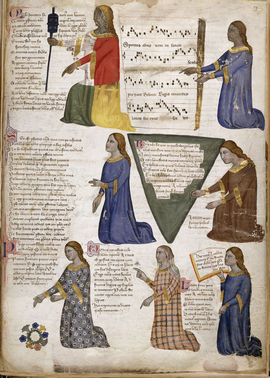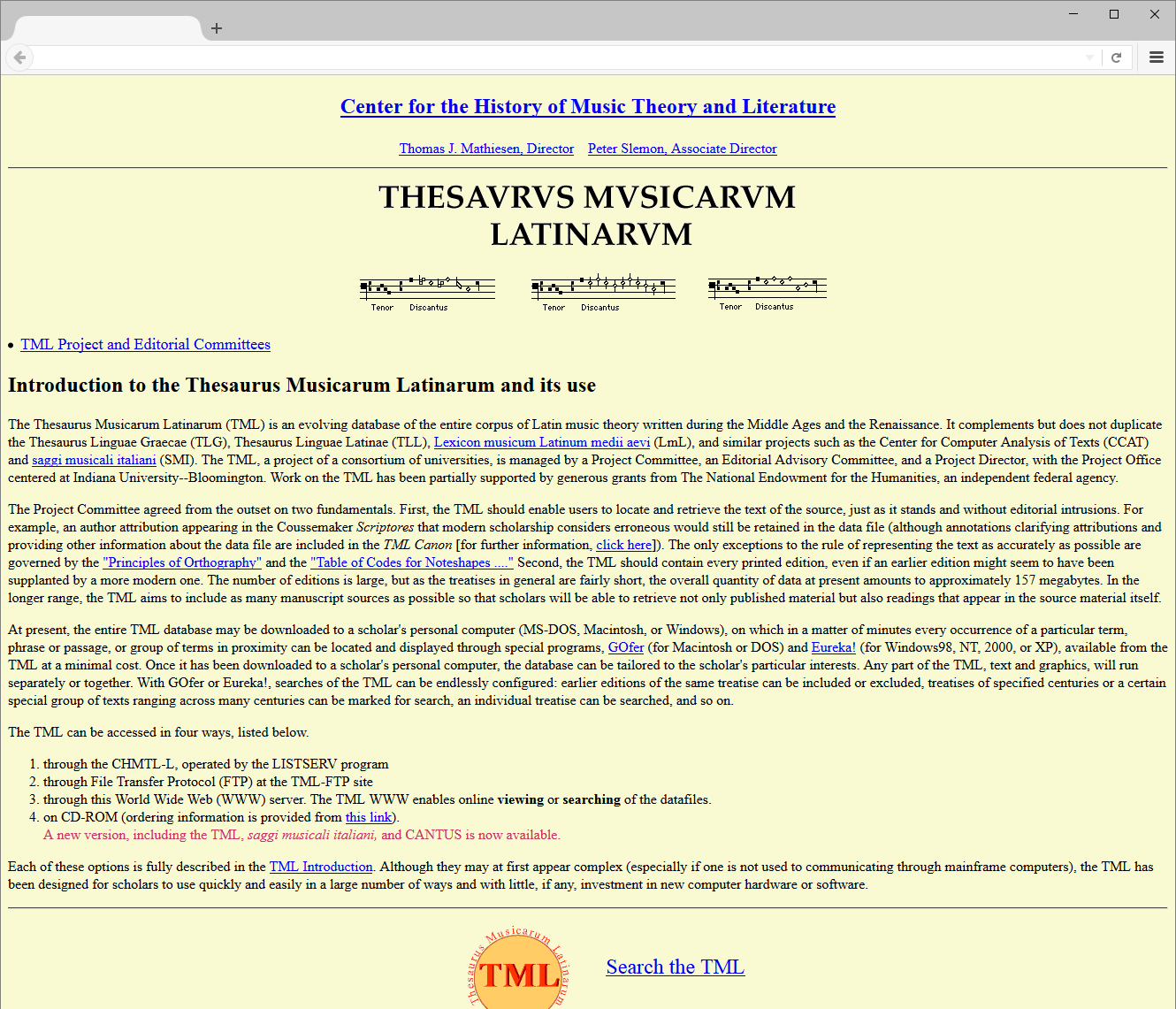A brief introduction

The Seven Liberals Arts *
The Thesaurus Musicarum Latinarum (TML) was created in 1990 by the initiative of a group of scholars from around the world, under the direction of Thomas Mathiesen at Indiana University, with the ambition to collect in electronic format the entire corpus of Latin music theory written during the Middle Ages and the Renaissance.
These texts are literary works that discuss general principles (e.g. the origin and nature of music, its role within human activities) or technical issues (e.g. the construction of musical instruments); or describe or define procedures (composition, notation and performance), and genres or styles (within liturgical, secular, and instrumental repertories, in monody and polyphony). Many of the treatises include illustrations and drawings exemplifying the matters discussed and musical examples, sometimes derived from actual compositions (sometimes the only remnants of otherwise lost pieces). Often the authors are the same musicians known from sources of contemporary music.
These writings are of course of the greatest importance to music historians, theorists and early music performers: the information they give plays a fundamental role in our ability to reconstruct, understand, and ultimately perform the music of the past. But the significance of these texts goes beyond the interest of a single discipline. Since its inception, the TML has also been used as a research aid for scholars of intellectual and scientific history. In fact, these writings reflect the much broader role that music held in the history of ideas, not as an exclusively aesthetic phenomenon but rather as an essential part of the social, religious, and educational experience, especially within those times and cultures when Latin was the language of learning and intellectual life.
At the time when the TML was established, some of these texts were being published in specialized series, while others were scattered in publications and journals often difficult to locate. The TML project aimed to gather all these texts in one place, and to use technology to disseminate them and to support their study. As a matter of fact, the TML developed coextensively with the scholarly use of the Internet. At the beginning, the texts were distributed via FTP, one of the first Internet services developed, which allowed users to download individual ASCII files from Bloomington to their own machines. The possibility of searching for words in electronic texts on a computer revolutionized the modus operandi of researchers and boosted scholarship.

The “classic” TML website (1998-2015) **
In 1998, with the launch of the website, the TML became one of the first resources in the field to find its way onto the World Wide Web, and over the last two decades, established itself as one of the most authoritative projects in the field of musicology, acknowledged as a key resource in numerous print and electronic publications. The success of the TML prompted the opening of the Center for the History of Music Theory and Literature (CHMTL) and the creation of sister projects dealing with similar texts in other languages (Saggi musicali italiani, Texts on Music in English, and Traités en français sur la musique).
In December 2015, the software operating the old search utility was the object of a malicious cyberattack and the site had to be shut down, making a complete rebuilding of the project, already in the planning stages, unavoidable.
A new edition, released in 2017, offers extended capabilities for browsing and searching the archive, but the TML staff is already preparing the TML of the future. We welcome old and new users to the first product of a plan that calls for the creation of an even more advanced resource, capable of sophisticated queries on text and eventually music (through the adoption of the standards of TEI, Music Encoding Initiative and MEI, the Music Encoding Initiative), and expanded in scope, providing additional materials and tools for the study of this corpus of writings and their authors.
The TML acknowledges the financial support that came initially from the Indiana University Graduate School, then from grants from the National Endowment for the Humanities (1992–95). Since 2012, support for the project has come from the Jacobs School of Music through CHMTL, now a research center of the School. The current redevelopment was also possible through an internal grant from Indiana University's Office of the Vice President for Research. Above all, we are grateful to the many scholars who have contributed to this resource transcribing and proofreading texts, or contacted us with corrections and suggestions, or simply to let us know that TML was useful to their scholarship, empowering our work.
Giuliano Di Bacco, Project Director, June 2017
